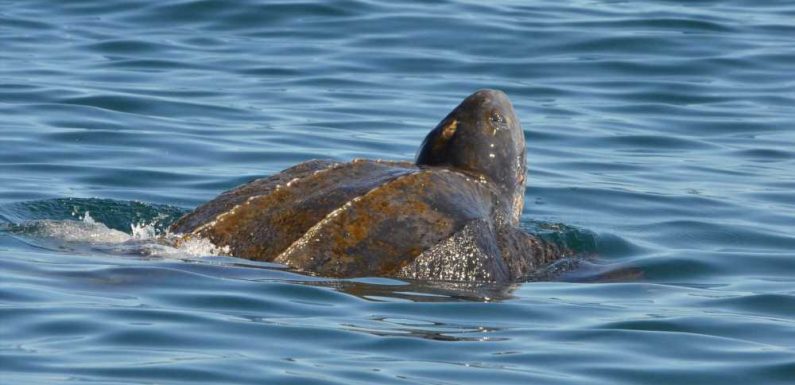
YouTuber Gabriel Arrington and his girlfriend Kelly Young were nine miles off the coast of Stuart, Florida, last week when they spotted a leatherback sea turtle. The rare sighting turned their fishing expedition into an opportunity to share the awful impact of plastic pollution on sea life.
The duo was capturing footage for Arrington’s YouTube channel, Bluegabe, when they came across a big patch of seaweed and garbage.
“There’s so much plastic it’s insane,” Arrington says while reaching into the water and pulling out a large piece of plastic.
He continues plucking litter from the ocean while explaining the grave danger plastics pose to sea life.
About 3 minutes and 40 seconds into the video (below), they spot a leatherback sea turtle within feet of the boat. Young films the endangered creature feeding amongst the trash-strewn waves.
“You can spend your whole life out on this ocean and see tops, two of three of those things,” Arrington says, adding that he’s “99% sure” that if the turtle was feeding on jellyfish, it was also eating plastic.
Arrington goes on to demonstrate how easy it can be for sea creatures like leatherback turtles to confuse plastic for food. Floating pieces of plastic look shockingly similar to jellyfish, which make up the bulk of the leatherback’s diet.
Load Error
“You almost can’t tell the difference,” he says, pointing to a piece of plastic amidst the jellyfish. “There’s equally as much plastic [as jellyfish].”
FAU Assistant Professor Dr. Tracy Mincer told WPTV that eating plastic can cause indigestion at best, and at worst, death to sea life.
“Unfortunately, it’s very common,” he said, noting that upwards of 20 million metric tons of plastic enter the oceans every year.
WATCH: On Florida’s Empty Beaches, Nesting Sea Turtles are Thriving
Leatherbacks, the largest turtles on Earth, can grow up to seven feet and weigh as much as 2,000 pounds. The species is currently listed as endangered under the Endangered Species Act. According to NOAA, it is estimated that their global population has declined 40% over the past three generations.
Arrington told WPTV that he hopes the images of the leatherback swimming in litter will be one more motivator for people to do their part. Beach cleanups, using fewer single-use plastics, and recycling are all ways we can help protect these magnificent creatures.
Source: Read Full Article













